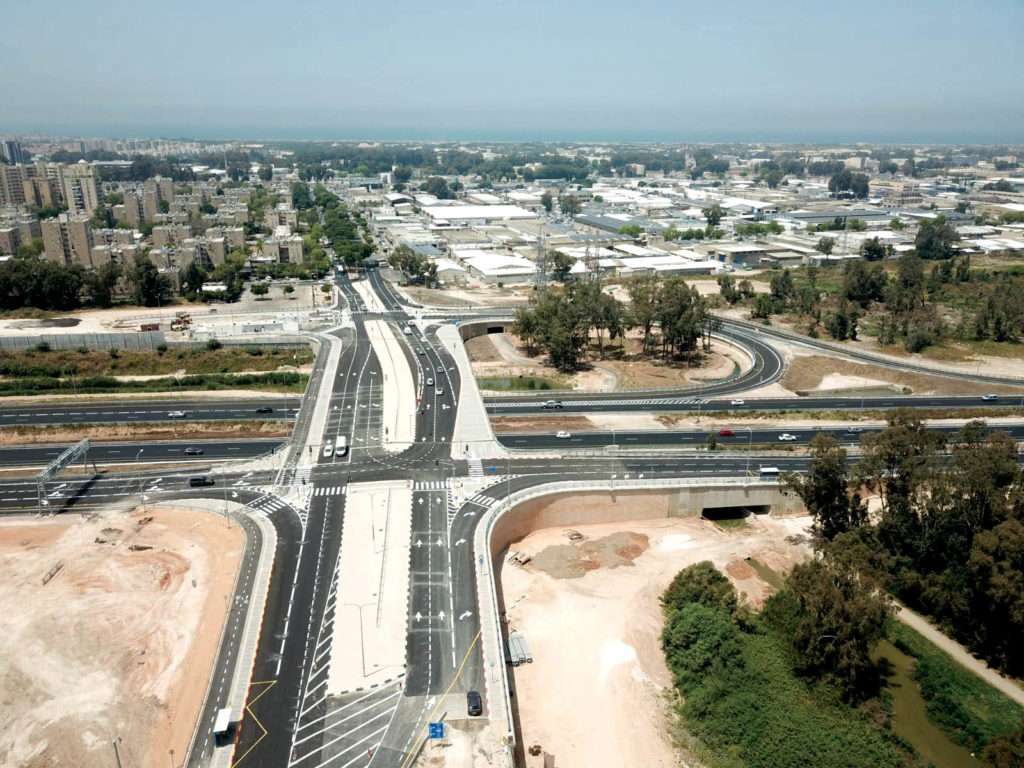MSE retaining wall drainage and pile obstructions
April 5th, 2022
The Reinforced Earth Co. examines the many elements of MSE retaining wall drainage when there are obstructions. Drainage inlet at roadway gutter line. Photograph courtesy of the Reinforced Earth Co. Two common types of obstructions we see behind a retaining wall face are site drainage structures and bridge abutment piles. The presence of—and loading from—these obstructions within […]
Methane gas geomembrane permeability
April 1st, 2022
Q: What is the least permeable geomembrane to methane gas? Regarding the permeability of geomembranes to methane gas, could you send me some technical guidelines? A: High-density polyethylene (HDPE) geomembranes are denser (more crystalline) than linear low-density polyethylene (LLDPE) geomembranes and less permeable. The water vapor, solvent and methane transmission (diffusion) of an HDPE barrier […]
ACE Geosynthetics wins IAAs in the geosynthetics category
April 1st, 2022
ACE Geosynthetics Inc. incorporated geogrids and geotextiles into mechanically stabilized earth (MSE) walls for a highway interchange project in the Middle East. Photograph courtesy of ACE Geosynthetics Inc. The northern part of a highway interchange project in the Middle East is adjacent to a developing industrial park; a densely populated city is located to the […]
GMA new and renewing members
April 1st, 2022
To find out more about these companies and other IFAI members, visit the member directory at www.ifai.com/members. L & M Supply Co. Willacoochee, Ga. www.landmsupplyco.comSupplier of geotextiles, silt fence, landscaping and erosion control products Polyweld USA Inc. Houston, Texaswww.polyweldusa.comManufactures geosynthetics and plastic welding tools
Welding HDPE geomembranes with biogas present
April 1st, 2022
Q: We are a Brazilian company specializing in biogas plants. We have built a big lagoon biodigester with a high-density polyethylene (HDPE) geomembrane cover. Now the cover is leaking liquid contained in the lagoon: We are organizing the repair procedure, and we would like to first investigate state-of-art practices and procedures for welding HDPE geomembranes […]
NSF 61-certified HDPE geomembranes
April 1st, 2022
Q: Hi, we are looking for options for NSF 61-certified high-density polyethylene (HDPE) liners for installation in a potable water tank, 95th-percentile concentration of free chlorine in the tank is 1.2 ppm (1.2 mg/L). The current liner (60-mil [1.5-mm] textured HDPE, installed in 1999) is damaged and needs to be repaired or replaced. We are […]
Impregnation of GCLs
April 1st, 2022
Q: We are confused with the term “impregnation” as it relates to seaming geosynthetic clay liners (GCLs). There are two types of impregnations: (1) Edge impregnation, and (2) complete nonwoven (cap layer) impregnation of GCLs. How does a manufacturer do this? A: The edge impregnation of GCLs (1) is done in the field by an […]
GCL-GM geocomposite: Which end is up?
April 1st, 2022
Q: In a geosynthetic clay liner-geomembrane (GCL-GM) geocomposite, does it make any difference which side of the geocomposite is up: GM or clay? A: This is a very detailed question that is application specific. The following design details all need to be considered: Is the GCL-GM geocomposite used for a liner or a cover, is […]
Calendared nonwoven geotextiles
April 1st, 2022
Q: What is the difference between normal nonwoven and calendared nonwoven (both needlepunched) geotextiles? Where can we use calendared nonwoven geotextiles? A: Calendared nonwoven geotextiles are passed between a set of heated rollers that applies normal pressure as a tertiary process of the production. This process increases the modulus, strength, tear resistance, puncture resistance and […]
LCC curing effect on geogrids
April 1st, 2022
Q: Can you tell me whether modest warming of geogrids (e.g., due to heat generated by the curing of lightweight cellular concrete [LCC]) might impact the long-term strength or long-term modulus of geogrids? A: You need to know the maximum temperature due to the heat from hydration of the LCC. Most pozzolanic reaction temperatures (like […]
 TEXTILES.ORG
TEXTILES.ORG




